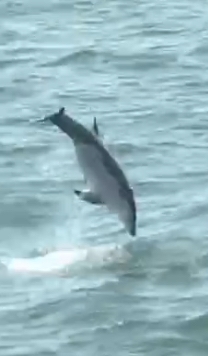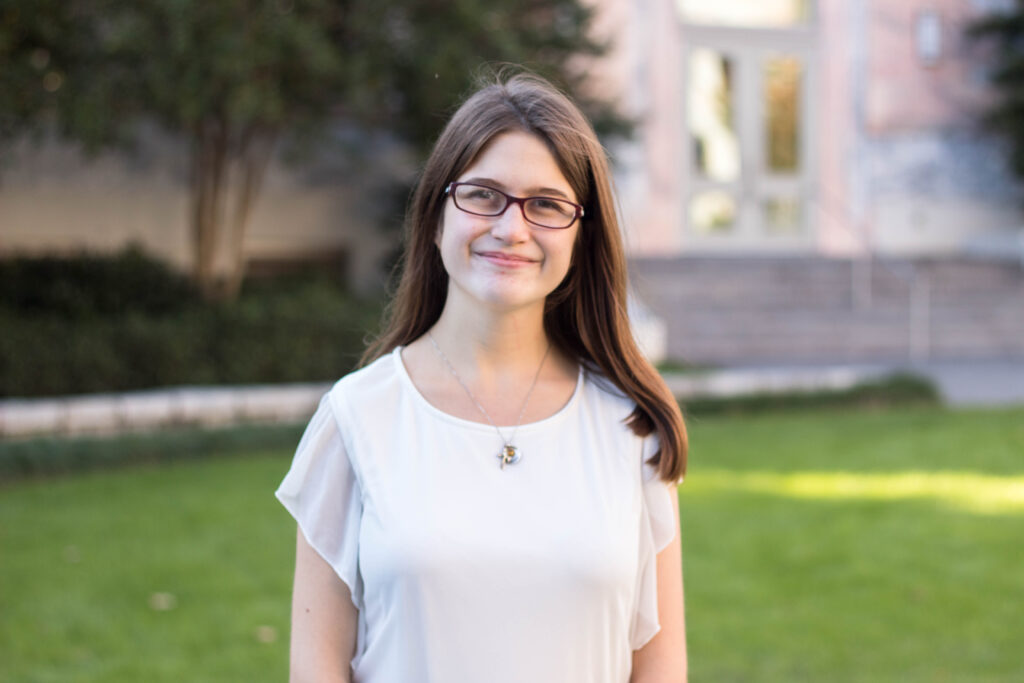I gripped the metal rim of the boat, sticky with evaporated salt water. It skipped gently over each cresting wave, smooth as a seagull skidding along the sea. Sunlight glinted on the surface of the water, its cloudy emerald color obscuring the depths below.
I could only begin to imagine the masses of life teeming here, just off the coast: water droplets packed with plankton, currents glittering with silver fish, sandbars full of scuttling crabs. And most spectacularly, dolphins gliding through the water, picking up speed as they erupted over the thin line between sea and sky. This is what we had come for: we ooh’d and ahh’d each time a dolphin leapt, revealing a glimpse of their long beak or curved dorsal fin, or once, their entire majestic profile.
While we marveled, researchers stood at the front of the boat, snapping photos. We were on a tour run by the Cape May Whale Watch and Research Center. As a naturalist explained the sights to us, these researchers collected valuable data. Their photos weren’t just for aesthetic keepsakes, but aimed at capturing a clear image of each individual’s dorsal fin. For dolphins, dorsal fins are like fingerprints. Each dorsal fin is unique, allowing the researchers to identify how individual dolphins migrated up and down the coast.
This particular group of dolphins—or pod—returned to New Jersey every summer, and the researchers had become familiar with them, just as the dolphins now recognized the voice of the naturalist leading these tours.
Not long after the naturalist listed the dolphins’ nicknames—monikors like Tippy, Triscuit, Thunder, and Lightning—interns encouraged wide-eyed children to stroke a horseshoe crab the crew had brought on board (with an educational permit). When the interns explained that flipping an upside-down crab could save its life from hungry seagulls, the children promised to look out for creatures stranded on the beach. It was a small act of kindness that meant the world to the horseshoe crab.
These small, tangible lessons are at the heart of ecotourism. A moment of awe—whether from touching a living fossil like the horseshoe crab or watching dolphins leap through the surf—sparks a connection that lasts long after the boat ride ends.
The simple kindness of flipping over a horseshoe crab reminded me of the tale of the starfish (adapted from “The Star Thrower” by Loren C. Eisely). After hundreds of starfish wash up on the beach, a young girl throws them back one by one. When a skeptic remarks that she can’t possibly save them all, she tosses another into the sea, saying, “Well, I made a difference for that one!” Inspired by her determination, the skeptic begins helping her, and soon others join, together saving multitudes of starfish.
Passion is contagious. When we share our awe with others, it multiplies. Collective wonder can fuel change, even across generations, starting with those children on the boat. At its simplest, it could mean rescuing a horseshoe crab. But as it gathers momentum, this appreciation builds a wave that can spur people to donate to conservation efforts or champion environmentally-friendly policy.

Snapping photos of dolphin and whale fins may seem like a drop in the ocean. But over time, these tiny data points paint a stunning picture. Since 2011, the organization has identified over 500 bottlenose dolphins and 230 humpback whales, each of which are now included in collaborative albums cataloging mid-Atlantic mammals. These photo IDs, along with detailed measurements on weather and sea conditions, behaviors, group sizes, the presence of baby dolphins, and more have helped researchers to better understand the migration patterns of these remarkable creatures. That knowledge is essential to building better conservation programs.
I left the tour feeling invigorated, awed not just by the breathtaking dolphins, but by the humans dedicating their lives to make the ocean a better place for our marine friends. Each picture they took, each note they jotted down was like a starfish thrown back in the sea, leaving us marveling at the ripples left behind.

Leave a Reply